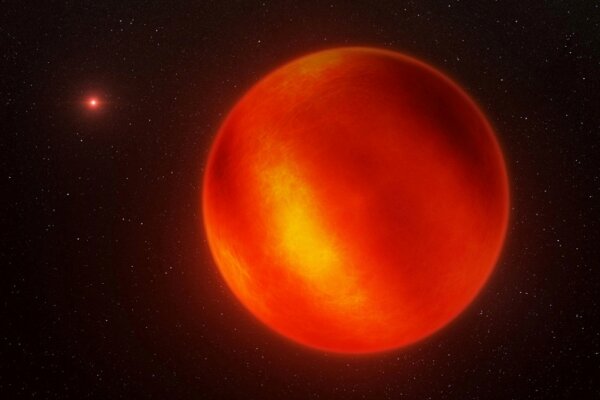
WASHINGTON—A recent study has revealed detailed information about the weather on two brown dwarfs, celestial bodies larger than planets but smaller than stars, which are located relatively close to Earth. The atmospheric conditions on these brown dwarfs have been examined using observations from the James Webb Space Telescope. These two brown dwarfs orbit each other approximately six light years away from our planet, with each having a different rotation period.
The data collected by the Webb telescope provided valuable insights into the dynamic weather patterns on these brown dwarfs. The researchers found multiple layers of clouds at different atmospheric depths, with the atmospheres primarily composed of hydrogen, helium, water vapor, methane, and carbon monoxide. The temperature at the cloud tops of these celestial bodies was recorded to be around 1,700 degrees Fahrenheit.
Beth Biller, an astronomer from the University of Edinburgh, who led the study, stated that this research has produced the most detailed “weather maps” of brown dwarfs to date. Brown dwarfs emit their own light due to their high temperatures, similar to embers in a fire. Unlike stars, they do not undergo nuclear fusion at their core.
According to Ms. Biller, brown dwarfs can have clouds in their atmospheres similar to planets but much hotter. The researchers compared these clouds to a very hot Saharan dust storm. Brown dwarfs are thought to form from large clouds of gas and dust, similar to stars, but they do not have enough mass to sustain nuclear fusion.
The study also revealed that the two brown dwarfs examined were formed around 500 million years ago and have diameters comparable to Jupiter. The fast rotation of these celestial bodies influences their weather patterns, creating bands and vortices similar to Jupiter’s Great Red Spot.
The researchers believe that the techniques used in this study could be applied to studying weather on potentially habitable exoplanets in the future. Brown dwarfs are relatively common in the universe, with over 1,000 known examples compared to more than 5,000 known exoplanets.
The James Webb Space Telescope’s ability to observe in the infrared spectrum has provided a significant advancement in understanding the complex atmospheres of brown dwarfs. The telescope’s unprecedented wavelength range and sensitivity have allowed scientists to monitor these atmospheres comprehensively.
Overall, the study sheds light on the intricate weather patterns of brown dwarfs and opens up possibilities for further research in exoplanet weather analysis.
By Will Dunham





